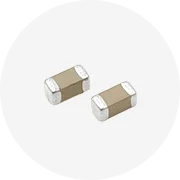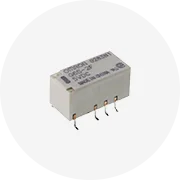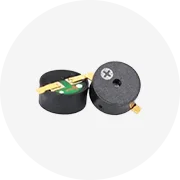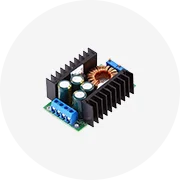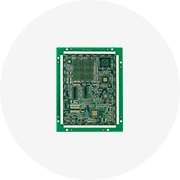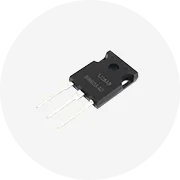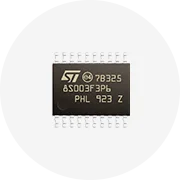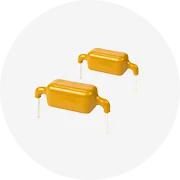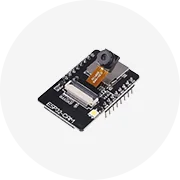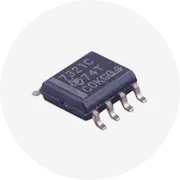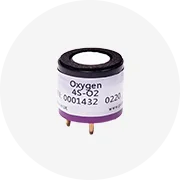Room occupancy sensor
(1294 products available)






IoT Commercial People Counting Device Occupancy Sensor 60Ghz Millimeter Wave Smart Human Presence Detection Radar Motion Sensor






Smart Pir Sensor Human Movement Detection Sensor Tuya Human Presence Wifi







360 Degree Real Occupancy Radar Sensor, Indoor Detect For Breath And Human Without Movement, IP20 High Sensitive


Real Presence Sensor 24GHz Millimeter Wave Motion Sensor Recessed Mounted Occupancy Microwave Sensor







Home Burglar Security Alarm System Door Alarm Sensor Magnetic Wireless Anti Theft Door/Window Alarm Device







Westbay Seat Occupancy Pressure Sensor Reminder Alarm Alert Sensor Pad for Car Bus Bed Chair Sofa Floor Meeting Room






Hotel Room Stair Hall Occupancy Motion Sensor Light Switch People Detection without Moving-for Sleepless Nights
Popular in your industry






Rayzeek RZ022 Wall Sensor Human Detector Movement Room Infrared Vacancy Occupancy Motion Sensor Switch for Light
Related Searches:




Bluetooth iBeacon Eddystone PIR Alarm Sensor for Room Occupancy Communication & Networking Product






wholesale iot room meetingroom occupancy sensor hotel ceiling mount human presence 60g radar people counter detector sensor






Flushed Mount Occupancy Sensor Breathing Detected 12V 24VDC Presence Sensors for Hotel, Office, Meeting Room






FOORIR Large-Screen Data Room Occupancy Sensor with External Alarm Easy-to-Complete Sound Alert Features






Home Safety Anti-Theft Smart Indoor Zigbee Motion Occupancy Sensor Tuya Alarm System De Humo Detector






4 Inch Motion Closet Light DOB 10W 650LM 5CCT Selectable PIR Motion Sensor Light Occupancy Sensor for Indoor, Closet, Hallway






ABLE Room Occupancy Indicator Switch Automatic DND Door Sensor DND Switch With Doorbell






ANT-3P Daylight Harvesting infrared electrical room occupancy small pir plus presence ceiling sensor for lighting control

Mobile Public Toilet/Conditioning Room Human Body Sensor Switch Unmanned Toilet Occupied Sign Fitting Room Parking Equipment






Geagood Outdoor Indoor Occupancy Human Current Sensor Switch Sensor Switch PIR Motion Infrared Sensor Switch






High Sensitivity Small Compact Design IoT People Counting Sensors for Monitor Room Occupancy and Utilization





PIR-2036-EP Wired Mini PIR Motion Sensor for Energy Saving System Hotel Room Air Condition Occupation Sensor






Occupancy Sensor Air Condition Infrared Motion Sensor Switch for Rooms Energy-savging






Human Presence Detection Detector People Counting Meeting Room Occupancy Smart Motion Sensor De Presencia Humana






Wireless Infrared Iaser Occupancy Vacancy Sensor IOT Room Occupancy Sensor






CE RED ROHS LifeBeing Breathing Detected Occupancy Sensors Switch for Hotel, Office, Meeting Room





450mmx500mm Micro Switch-Safety Pressure Switch Pad Seat Occupancy Sensor for Car Bus Bed Chair Sofa Floor Cinema Meeting Room






ABLE Energy-Saving Room Key Card System Hotel Occupancy Sensor Switch Power Saving Key Card System For Hotels






Door Lock Style Occupancy Vacancy Sensor Room Electric Door Open Occupancy Sensor






Customized Car Bus Bed Chair Sofa Floor Restaurant Cinema Meeting Room Seat Reverse Occupancy Pressure Sensor






RZ050 Remote Motion Sensor Switch for Air Conditioner Control Wireless Battery Powered AC Occupancy Sensor for Hotel Room






Rayzeek RZ020 No Neutral Required Residential In-Wall PIR Occupancy Sensor





Adjustable 360 Degree Ceiling Occupancy Detection Light Switch Embedded Pir Motion Sensor
Top categories
About room occupancy sensor
Types of Room Occupancy Sensor
Room occupancy sensors are manufactured in various types, each designed to cater to specific environments and applications. The most suitable model for a space will depend on factors such as room size, lighting conditions, and usage patterns. Below are the various types of room occupancy sensors.
Infrared Occupancy Sensors
Infrared occupancy sensors detect occupants by sensing body heat. These sensors, called passive infrared (PIR) sensors, are highly sensitive and, therefore, widely used in residential and commercial settings. PIR sensors are suitable for low- to medium-traffic areas such as meeting rooms, offices, and residential areas.
Ultrasonic Occupancy Sensors
Ultrasonic occupancy sensors are developed to detect motion by emitting ultrasonic waves and measuring the echoes that return. These sensors are highly sensitive and can detect even small movements, making them ideal for areas where people may sit or move slowly, such as lounges, restrooms, or conference rooms.
Dual-Technology Sensors
As the name implies, dual-technology sensors use a combination of infrared and microwave or ultrasonic technologies to detect occupancy. The idea is to enhance the accuracy of detection by combining the strengths of both methods. These sensors detect occupancy only when both technologies register a presence.
Microwave Occupancy Sensors
Microwave occupancy sensors emit microwave radiation and detect the movement of objects within the field. Compared to PIR sensors, the technology used is more sensitive to motion and can cover a larger area. This makes it ideal for spaces with varying occupancy patterns.
Photocell-Integrated Occupancy Sensors
These are a type of occupancy sensor that uses energy-saving photocells. They work by turning off artificial light whenever natural light is available, meaning these sensors are usually installed where there's abundant natural lighting. Integrated photocell occupancy sensors are ideal for spaces with a strong influx of natural light, which will, in turn, limit the need for artificial lighting.
The choice of occupancy sensors depends on the specific use case and environment where they will be deployed. Of course, understanding how these different types work will help make an informed decision and ensure optimal performance in all settings.
Industrial Applications of Room Occupancy Sensor
Occupancy sensors are particularly suitable for efficiency, safety, and energy-saving systems in industrial and commercial settings. Below are some industrial applications of these sensors.
Energy Management and Cost Reduction
Occupancy sensors efficiently manage lighting, HVAC, and other systems in industrial facilities. They detect the presence of workers in large spaces and adjust systems accordingly, thereby saving energy and minimizing costs.
Automated System Controls
Occupancy sensors linked with machinery control systems help industries maintain safety and efficiency. In areas with little movement, these sensors can switch off machines or equipment, cutting down power usage when there's no one around.
Warehouse and Inventory Management
In large warehouses, dual-technology occupancy sensors can help assess traffic in specific areas and optimize storage layouts. Data collected from these sensors can show how often certain aisles or storage areas are visited, aiding decisions on inventory placement and improving workflow efficiency.
Enhanced Safety Monitoring
In high-risk areas, occupancy sensors can help improve monitoring and safety. They can detect if an area is occupied when it should be empty due to dangerous conditions, activating alarms or shut-off mechanisms. This automatic safety feature will, therefore, help reduce accidents and protect workers in any industrial setting.
HVAC Optimization
Continuous occupancy detection helps HVAC (Heating, Ventilation, and Air Conditioning) systems maintain the right temperature and airflow levels, depending on how busy or empty a space is. Accurate occupancy data ensures these systems work at optimal energy levels, reducing wear and saving energy and costs.
In industrial applications, occupancy sensors improve energy efficiency, enhance safety, automate processes, and contribute to overall operational cost savings. These benefits significantly impact an industry's bottom line and sustainability objectives.
Product Specifications and Features of Room Occupancy Sensors
Technical Specifications/Key Features
The technical specifications or features of room occupancy sensors vary by type and model. The following are some standard features that may be found in most of these sensors.
Detection Range
However, the detection range will depend on the type of occupancy sensor. PIR sensors generally have a detection range of 10-20 feet, while ultrasonic and microwave sensors can detect motion from up to 30 feet away.
Field of View
The field of view (FOV) is usually determined by the lens design and position of the sensor. Most infrared sensors have a cone-shaped FOV. Its angle is approximately 90 degrees, while microwave and ultrasonic sensors may have wider, more complex perspectives, around 180 degrees of coverage.
Time Delay
The time delay is the duration the sensors will keep lighting or systems on after no movement is detected. This is usually adjustable and typically ranges from 30 seconds to 20 minutes, depending on the model. A longer delay is suitable for rooms where people congregate for long periods. On the other hand, a shorter delay is better for frequently used spaces.
Photocell Sensitivity
This feature controls how much ambient light affects the sensor. Built-in photocell occupancy sensors usually let users adjust sensitivity levels to ensure artificial lighting activates only when natural light is insufficient. Photocell sensitivity is crucial for energy savings, especially in areas with fluctuating natural light.
Installation Method and Ease
The installation of occupancy sensors often requires mounting them on ceilings or walls, depending on the type. Most models are straightforward and come with detailed instructions. Some newer designs allow wireless installation to retrofit without major changes.
Power Source
Most room occupancy sensors are powered using supply voltage, but some models are battery-operated. The battery ones are more flexible in terms installation. However, the wired models are generally preferred for long-term industrial applications.
Adjustable Settings
For many occupancy sensors, settings such as sensitivity, time delay, and photocell activation are usually adjustable. This will enable users to tailor the performance of the sensor to their specific needs. Many devices have simple control knobs. However, some require mobile applications or additional hardware to modify these settings.
How to Choose Room Occupancy Sensor
Choosing the right room occupancy sensor means considering several factors to ensure optimal performance. Below are the factors to consider.
Type of Environment
Will the occupancy sensor be used in a residential, office, or industrial setting? And what about the specific room conditions? For instance, living areas with constant movement may require an ultrasonic or microwave sensor. Meanwhile, industrial areas are better with dual-technology sensors for safety and energy management.
Detector Technology
Occupancy sensors use infrared, ultrasonic, microwave, or dual-technology detection methods. Each detection method has strengths and weaknesses. For example, infrared sensors are energy-efficient and cost-effective and good at detecting movement. On the other hand, ultrasonics offer high sensitivity to minor movements.
Area Coverage
The detection range and field of view should be adequate to cover the entire area where the sensor will be installed. This is because too small a detection range will not cover the entire space, and field of view will leave blind spots.
Application Type
For spaces with dynamic occupancy, choosing an occupant sensor that uses a single detection technology, such as infrared, should be avoided. Space with static occupancy, like warehouses, can benefit from dual technology. Commercial spaces with high or low movement should use ultrasonics or a microwave.
Adjustability and Sensitivity
How easy is it to adjust the settings? Also, are the sensitivity levels adequate? The answer to these questions will be critical because users may want to tailor the sensor's performance according to the season or room use. So, going for a model that allows easy adjustments and has multiple sensitivity levels would be great.
Energy Efficiency
The most practical way to power occupancy sensors is to connect them to main energy sources. However, some offer battery-powered flexibility. While wired models may be a hassle during the installation, they are better for continuous industrial use.
By carefully considering these factors, it will be possible to select the right occupancy sensor that meets the requirements of the intended space and its users.
Q & A
Q. What's the difference between passive and active infrared sensors?
While both types of infrared sensors detect occupancy using infrared technology, one of them is passive, while the other is active. Passive infrared occupancy sensors only detect the body heat of people in the area. This is because they cannot detect anything around them actively. On the other hand, active infrared sensors emit infrared light. They will, therefore, compare reflected light patterns to determine occupancy.
Q. Can occupancy sensors be used outdoors?
Occupancy sensors are designed for indoor use. However, there are outdoor models. These models are IP-rated to withstand weather elements like rain, wind, and extreme temperatures. Photocells are often added to outdoor occupancy sensors. This allows them to deactivate when there's sufficient natural light, keeping the area within energy over.
Q. What are the limits of dual-technology occupancy sensors?
The primary drawback with dual-technology sensors is that they can sometimes be overly sensitive or miss detections. This occurs particularly when only one detection mode is triggered. For example, a body at rest might be detected by an ultrasonic sensor. But the infrared passive sensor will not register it.
Q. Do occupancy sensors work well in large industrial spaces?
The good news is that some occupancy sensors are particularly designed for large industrial areas. It includes those with long detection ranges and wide fields of view. Dual-technology sensors are especially good for this application. They effectively cover large spaces.
Q. How often should the battery in a wireless occupancy sensor be changed?
While the frequency of replacing the battery will depend on the model and usage, most batteries in wireless occupancy sensors last between one and three years. Some modern sensors use lithium batteries that can last even longer. These long-life batteries require fewer maintenance visits.





































